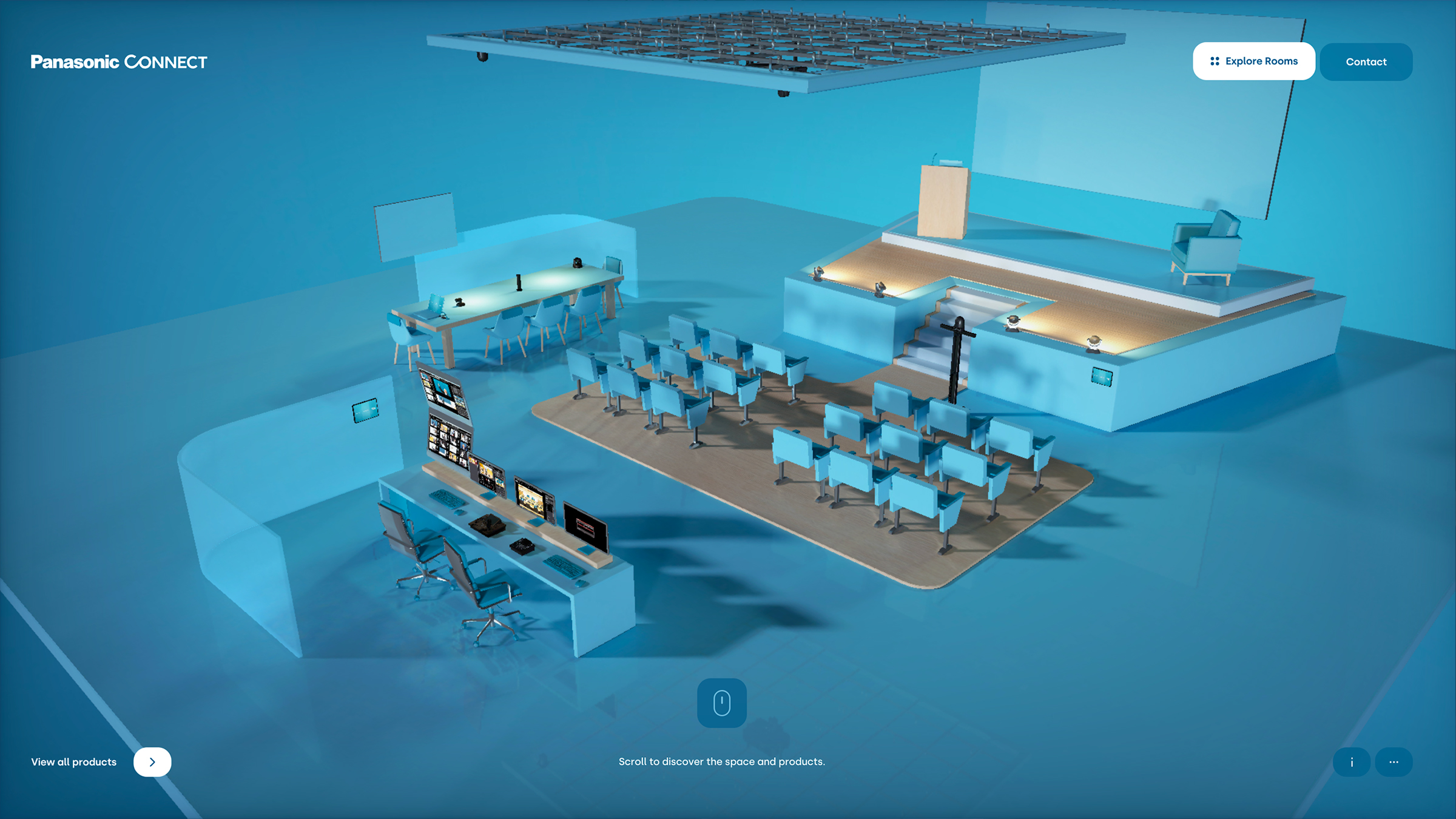
Panasonic
Panasonic Connect
Showcasing professional products through an immersive and engaging experience.

/01 Context
- Strategy
- Design
- Web
- 3D
Conventionally the sale of items intended for professionals is an uninspiring - detail heavy online experience. Panasonic wanted to change that. The client wanted to showcase cameras, projector, displays and other devices in a fun and engaging way that would place these products in a context the users would immediately understand.
Panasonic is offering a wide range of products and services to professionals, and needed to present this offering in a way that would surely differentiate it from the competition. The client reached out to us with this very desire to put the context first by using a 3D environment in which the products could be showcased, creating an immediate connection between the product itself and its intended use.
/02 The Experience
Creative concept
Since users would surely be looking for different products and use cases, we crafted four different environments corresponding to four different contexts in which these products would be useful. The client provided assets for each of the more than 30 products we used, and we then had to optimize them to ensure a smooth experience. In parallel, we created the four rooms from the ground up, iterating until they would be identifiable enough – while avoiding being too literal.
Clicking on a product would then allow users to access the data associated with it. This would include a short description of the product, as well as pictures, videos, and technical documentation. Related products are also put forward so users would be guided to their next waypoint.





/03 Under the hood
3D & WebGL
Building an environment is no easy task, let alone four. In each of the four rooms, the user is guided along a camera path that is constantly changing orientation so they would always see the upcoming products, and could access them by clicking on them.
All the 3D fine tuning was well worth the time and effort, we now have an intuitive navigation (simple scroll and click) making a rather complex environment a joy to spend time in!

Technical challenge
The number one challenge we faced was undoubtedly to optimize extremely detailed assets without compromising on the quality. Imagine a studio camera where every knob, button or port needs to be seen by professionals, while having to keep a low polycount to ensure that the whole platform could still perform with an optimal frame rate.
Reducing the polycount on such complex objects was only made possible by our very talented in-house 3D Artists, and at the end of the journey both the client and users were happy to find that the products kept their identities and level of detail, while still being easy to manipulate and fast to load.





 English
English
 Español
Español